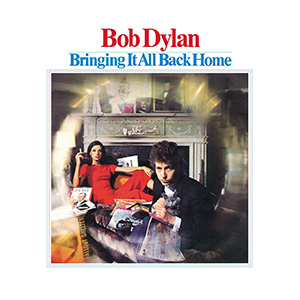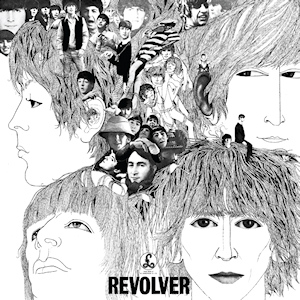
I’ve been listening to John Lennon’s debut album “John Lennon/Plastic Ono Band” from 1970. Lennon left the Beatles in September 1969, after they finished recording “Abbey Road.” Paul McCartney publicly announced the group’s break up seven months later. John Lennon and Yoko Ono began primal therapy, a type of psychotherapy that focuses on reliving and engaging with repressed childhood trauma. Often referred to as “primal scream therapy,” the sessions encourage the patient to allow themselves to scream, cry, or otherwise feel the emotions they suppressed as children. The deeply personal lyrics of this album express thoughts and feelings encountered during those sessions.
Of the tracks on this album, I only really knew “Mother” and “Working Class Hero.” I’ve probably heard many of the other songs before, but I don’t recall. While “Imagine” had a few better songs on it, “John Lennon/Plastic Ono Band” proved to be a stronger album overall. There’s not a weak song on it, as opposed to “Imagine,” which I remember dragging through the middle. Anyway, definitely glad to spend th time with this album and definitely will continue with it.
Mother
The album opens with the ringing of a funeral bell; the record of which plays at a slow speed giving it a lower pitch and a great sense of distance. Lennon’s mother Julia passed away in 1958, when her son John was sixteen years old. This was twelve years before “Mother” was recorded. The vocals, “Mother, you had me, but I never had you…” start at the same time as the drums, bass guitar, and piano.
The instrumentation is sparse, open, and direct. Fellow-former-Beatle Ringo Starr plays a simple 8-beat rhythm pattern: hi-hat on every 8th note, kick on the first and third beat and snare on the second and fourth. The piano strikes the chord once at the beginning of each chord change in the progression, with an occasional lead-in note. The bass guitar plays the tonic underneath, with a lead-in note on the 8th note before the chord. As the song progresses, the instrumentation build slightly and gradually in intensity, but never get showy.
The verses follow a I-V-I-I-IV-IV-V-V-I-I7-IV-IV-I-V-I-I chord progression. At about 68 BPM and moving at no more than one chord per 4 beat bar, this progression moves slowly. Lennon sings a full three verses before moving into the chorus-like coda, repeating: “Momma don’t go, Daddy come home…” This plea happens over a IV-I-V-V-IV-I-I7-I7 progression.
This is absolutely one of Lennon’s greatest songs as a solo artist. It starts with sadness, but at the end of each verse turns that lingering resentment into a triumph: “I just gotta tell you, goodbye, goodbye.” However, the coda suggests otherwise as Lennon begins singing and eventually grows to screaming, asking for his parents to return. Rather than giving closure to that childhood pain, he faces it and brings it out.
Hold On
The second track “Hold On” had my ear immediately with the opening chords strummed on electric guitar through a tremolo effect. The tremolo effect is a type of amplitude modulation, often built into guitar amps, that automatically turns the volume up and down rapidly creating a trembling effect. I happen to love it, so I liked this song before it even really got started.
The instrumentation on this song, like “Mother,” is also simple and open. It feels like the album cover photo, open, free, relaxed, and maybe a little introspective. Only three musicians were involved: John Lennon on vocals and guitar, Klaus Voormann on bass, and Ringo Starr on drums.
The verses have a I-I-ii7-ii7-iii7-iii7-(IV-V) chord progression. The IV-V are more hinted at by the bass than specifically played by the guitar. The chorus repeats a v7-vi7 pattern, which is a little unusually to have a minor fifth in a song that is otherwise in a major key. This progression creates some tension, making it clear that he teases us with a cadence. Which does get delivered at the end of the chorus, “hold on.” returns us to the tonic.
Isolation
A simple piano line opens “Isolation” with a series of played chords: I-Iadd#V-vi7-I7-IV-IV. Again, Lennon pulls this introspective feeling from a song in a major key. Many musicians would instinctively turn to a minor key, but Lennon finds more power in that contrast. And that particularly may e appropriate here, as this song expresses something that I’ve long felt people misunderstand. I recall often hearing people back home in Ohio disgusted with the affluent complaining about their problems. As if, having money and fame solved all problems. In this song, Lennon recognizes that lost-touch that comes from higher-levels of success as well sharing that it creates a unique set of problems. And even with those, the same basic human suffering remain.
The verses continue the same chord progression used in the intro. The instrumentation remains simple in this song as well: drums, bass, piano, and vocals. Lennon provides a bed of extended chords on the Hammond organ through the verses, resting at the end of each verse. Vocals are delivered gently, the drum patterns basic, resting between sung verses. The bass, again, is not showy, but does its job.
I love the bridge, which is one of my favorite parts of the whole album. The drums is mostly reduced to a 4 beat kick drum, the piano becomes more strongly rhythmic emphasizes the chord progression. Double-tracked vocals, panned hard left and right, chant in unison: “I don’t expect you to understand, after you’ve caused so much pain, but then again, you’re not to blame, you’re just a human, a victim of the insane…” The word “insane” is drawn out as Lennon pulls away from the microphone into the distance. A piano and drums relax as well, as the timid but strong Hammond provides the bed giving rest.
People say we got it made
Don’t they know we’re so afraid?
Isolation




